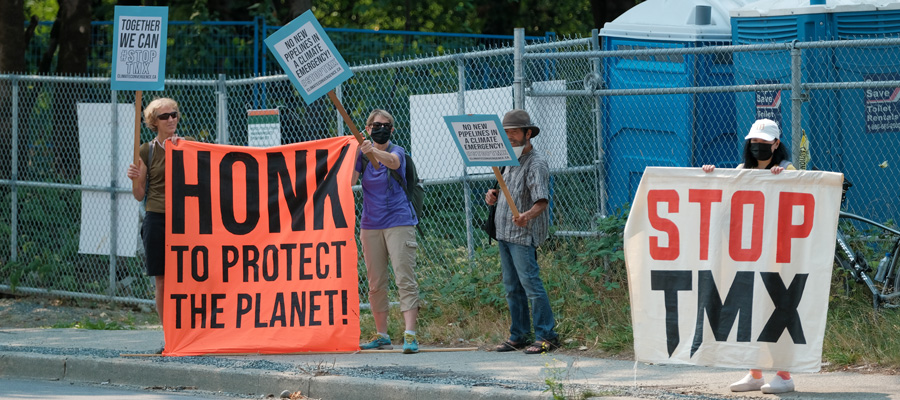Enbridge Pipe Dreams and Nightmares
We released today a report by yours truly on the economic costs and benefits of the proposed Enbridge Northern Gateway Pipeline. In particular, I take aim at the outrageous claims about jobs made by the feds and Enbridge as part of their sales pitch. The report takes a closer look at the input-output modelling of job impacts, and considers alternative investments of $5 billion in the green economy. On the cost side of the ledger, I look at existing employment in the region that could be affected, and environmental costs associated with oil spills and GHG emissions.
While the media framing of the pipeline project has been jobs vs the environment, the harsh reality is that very few jobs are being created by the pipeline. We can bank on no more than 3,000 jobs per year for three years during the construction phase (Enbridge’s own numbers say 1,850 per year for three years laying the pipe, and if we assume that the steel and pipe will be manufactured in Canada that would be, generously, another 1,000 jobs for three years). Once complete, Enbridge estimates 217 direct jobs in pipeline operations. This is not really a surprise because the oil and gas industry is one of the most capital intensive in the world, employing less than 1% of Canadian workers.
Labour shortages in the construction sector imply that if the pipeline is not built the vast majority of workers would likely be working somewhere else. This is an important point because the modelling invoked by Enbridge essentially assumes that workers would otherwise be unemployed. There are other problems in Enbridge’s input-output modelling, some of which seem to be endemic problems with that kind of approach period, while others seem to be a mis-application of the modelling by Enbridge. Alas, I’m just going on what’s in Enbridge NEB application here, as I asked Enbridge for more detailed modelling results and they refused to provide them on confidentiality grounds. Overall, I had more faith in input-output models and was more willing to take the numbers at face value when I started writing the paper, but found the numbers just could not be justified.
Input-output models give gross figures but we need to net out alternative uses of funds. The report considers alternative investments of $5 billion, particularly in green economic development that would also reduce our GHG emissions and our reliance on fossil fuels. Spending $5 billion on public transit, building retrofits, renewable energy and so forth would generate many times more jobs than investing in the pipeline. A modest carbon tax of $10 a tonne applied nationally would generate $5 billion per year, every year, that would facilitate such investments.
Then there are the costs. 200-300 super-tankers up the inlet into Kitimat will have a negative impact on commercial and traditional fishing in the region even if there are no spills. The local Gitga’at First Nation gets 40% of its food supply from traditional sources. Fewer people will want to plan an eco-tourism adventure to Kitimat if the pipeline is built. So the pipeline must consider these impacts too, with some 18,000 regional jobs in potentially affected sectors in proximity to the pipeline route.
As for spills, the question is not if there will be a spill but when and how bad it is. Diluted bitumen is highly corrosive and breaks pipes. Enbridge alone has had more than 800 leaks in its pipeline network going back just over a decade. In the US, more than 5,000 spills going back to 1990. Spills are a just a cost of doing business from the company’s perspective.
While spills are more of a probabilistic thing, GHG emissions are not. The pipeline would facilitate 80-100 million tonnes of CO2 into the atmosphere every year, which is more than BC currently emits in total. If we put a price on those emissions of $50-200 per tonne, reflecting some recent estimates of the external costs of carbon emissions, we get a range of $4-20 billion in environmental costs just from GHG emissions. Given that the pipeline is anticipated to create about $4 billion per year in profits to the Enbridge shareholders and oil sands producers, these are odious profits that come at the expense of people in other countries and into the future.
Media postscript:
I was on CBC radio this morning talking about the report, and on CTV news last night:
http://www.ctvbc.ctv.ca/servlet/an/local/CTVNews/20120320/bc_enbridge_pipeline_jobs_report_120320/20120320/?hub=BritishColumbiaHome
And Canadian Press did a great wire story on the report:
http://t.co/acTN0YP5
Topics: Climate change & energy policy, Employment & labour, Environment, resources & sustainability


